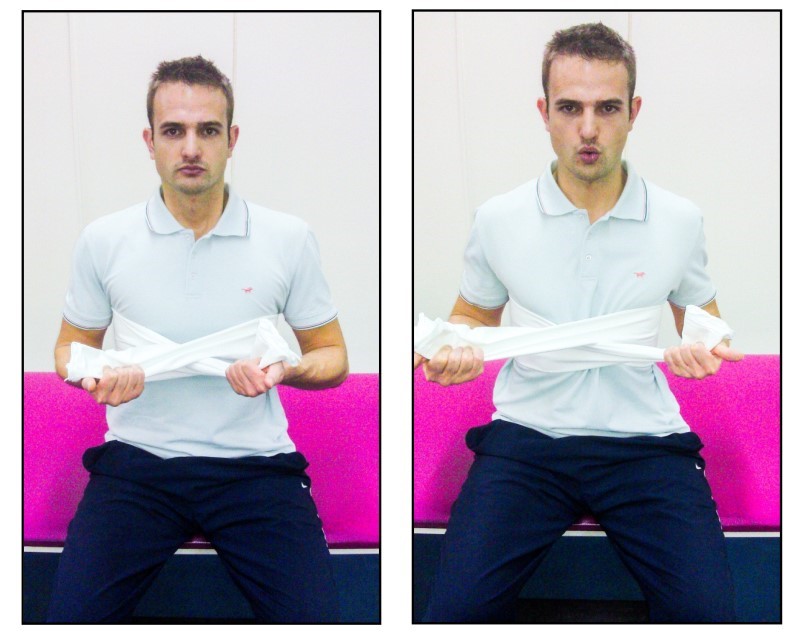Innovation
It is recommended for coping with effort and strengthening the respiratory musculature and expelling residual secretions.
Evaluation System
Using spirometry or other appropriate pulmonary function tests, perform baseline measurements of respiratory parameters during and after breathing exercises, such as lung volume (e.g., tidal volume, vital capacity), respiratory rate, and oxygen saturation, to track changes in respiratory function and exercise tolerance.
Assess the patient's subjective perception of dyspnoea or breathlessness before, during and after breathing exercises using standardized scales.
Note any other symptoms the patient experiences during or after the activity, such as coughing, chest tightness or fatigue.
Pay attention to the patient's form and technique when performing the breathing exercises with the resistance band.
Determine the patient's subjective perception of dyspnoea or breathlessness before, during and after the breathing exercises using standardised measurements.
Note any additional symptoms that the patient experiences during or after the exercises, such as coughing, chest tightness or fatigue.
Pay attention to the patient's form and technique when performing the breathing exercises.
Assessment
Incorporating resistance band breathing exercises into a comprehensive respiratory rehabilitation or conditioning program can provide numerous benefits for individuals seeking to optimize their respiratory health and function.








